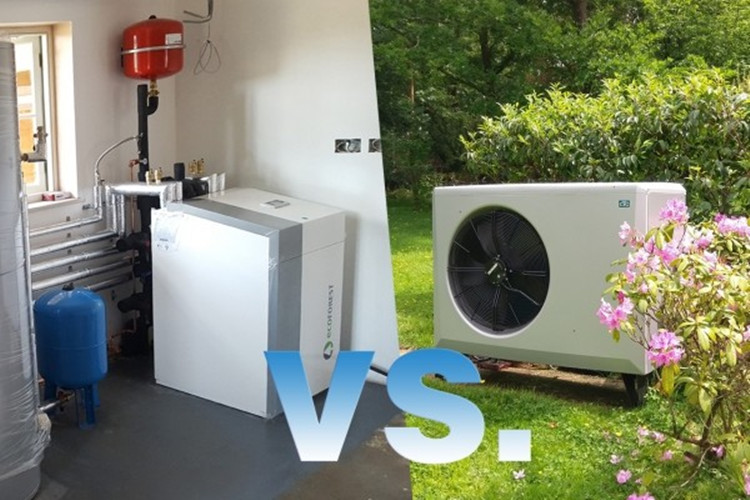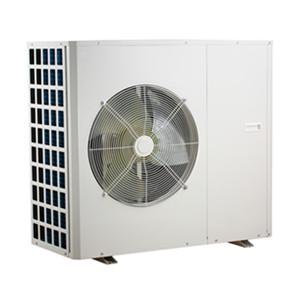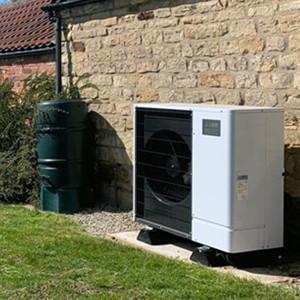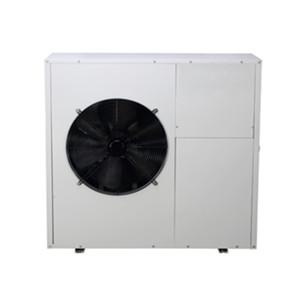Difference Between Air Source Heat Pump
Both air source heat pumps and ground source heat pumps offer a low-carbon and energy-efficient way to heat your home, but the main difference between them is how they get their heat.
Air source heat pumps take the surrounding outside air and convert it into heat, while ground source heat pumps use vertical or horizontal pipes (called ground loops) to absorb low-temperature heat from the ground. The ground loop contains a liquid (a mixture of water and antifreeze) buried in the ground of your garden. The heat from the ground return is then converted into heat by the pump unit.
What is the difference between an air source heat pump and a ground source heat pump?
In the heat pump space, there are two main technologies that operate in similar ways but come from very different sources. The two options are Air Source Heat Pump (ASHP) and Ground Source Heat Pump (GSHP).
ASHP uses ambient air outside the home. They extract heat from the air, compress it, and push it into the indoor ductwork. In cold climates, changes in the temperature of the outside air make this more challenging.
On the other hand, ground source heat pumps go deep below the frost layer of the earth to use the more stable heat energy underground.
Both systems use the same core heat pump technology, but the air source heat pump does have to work harder to extract a small amount of heat from the ambient air when temperatures drop below freezing.
Ground source heat pumps obtain heat from a more stable source. As a result, they are much more efficient at heating a home in the coldest winters, no matter how cold the outside temperature is.

Air source heat pump
Let's take a closer look at air source heat pumps. These units are increasingly used as homeowners look for alternatives to heating by burning natural gas or other hydrocarbon fuels. They work best in milder climates.
ASHPs come in several different varieties and can be installed using existing ductwork in the home or a ductless mini-split configuration. The mini-split system means you can install a central condenser as well as wall-mounted units in any room you want to cool or heat.
Regardless of the configuration in the home, an air source heat pump starts with a heat exchanger placed outside the house. An exchanger extracts heat or cold from the outside air and transfers it to the home through an internal system.
Ground source heat pump
Similar to ground source heat pumps used in modern residential geothermal systems, they have been in use since the 1940s. These systems use the earth itself as a heat sink by drilling to below surface temperature, which in the United States reaches a depth of at least 8 feet.
Beneath the frost, the Earth's temperature remains almost 55 degrees Fahrenheit. This sets the stage for predictable geothermal heating and cooling systems.
For geothermal energy systems, closed-loop pipes are laid horizontally or vertically on the ground around the house. Water or other liquids are then circulated inside the pipes through the stable temperature of the earth, collecting this thermal energy.
The liquid carries the heat from the ground to the heat pump in the home. The heat pump then transfers heat to the air in the home, heating it without burning any fuel.
In the summer, a heat pump takes warm air from your home and releases it underground through the same closed-loop ducts. The cooler water from the surrounding earth is then pumped back into your home and unleashed air conditioners that naturally dehumidify.
The surrounding earth is an ideal place to extract heat in winter or dispose of excess heat in summer.
The fact that the temperature doesn't fluctuate drastically in extremely hot or cold weather results in the system continuing to perform well in extreme temperatures, resulting in some substantial utility savings for homeowners as it offsets the High cost of fuel and air conditioning in winter. summer.
Advantages and disadvantages of air source and ground source heat pumps
Both air source pumps and ground source pumps run purely on electricity. They each have advantages and disadvantages, allowing homeowners to find the solution that best suits their needs.
Ground source pumps are generally more energy efficient. This is simply because they use a consistent temperature below the earth's surface, as opposed to the variable air temperature that air source heat pumps use outside the home.
Extracting energy from below the surface also means the system won't be affected by severe weather or storms, as everything that isn't indoors is buried in the ground. No equipment outside the home that could be damaged or affected by weather changes.
Converting air temperature requires more energy than converting ground temperature. This is why ASHP consumes more power than GSHP.
On the positive side, the upfront cost of an ASHP system can be lower and can often give you a better return on investment in milder climates. But as the outside temperature drops, they lose their edge.
Leomon's Ground Source Heat Pump
Heat pump-based systems are gaining popularity as homeowners look for ways to save on rising utility bills.
Ground source heat pumps have been around for decades. However, Leomon is breaking new ground, advancing the core heat pump and drilling technology used in the installation. These advancements have made geothermal ground source heat pumps more affordable and easier to install.





